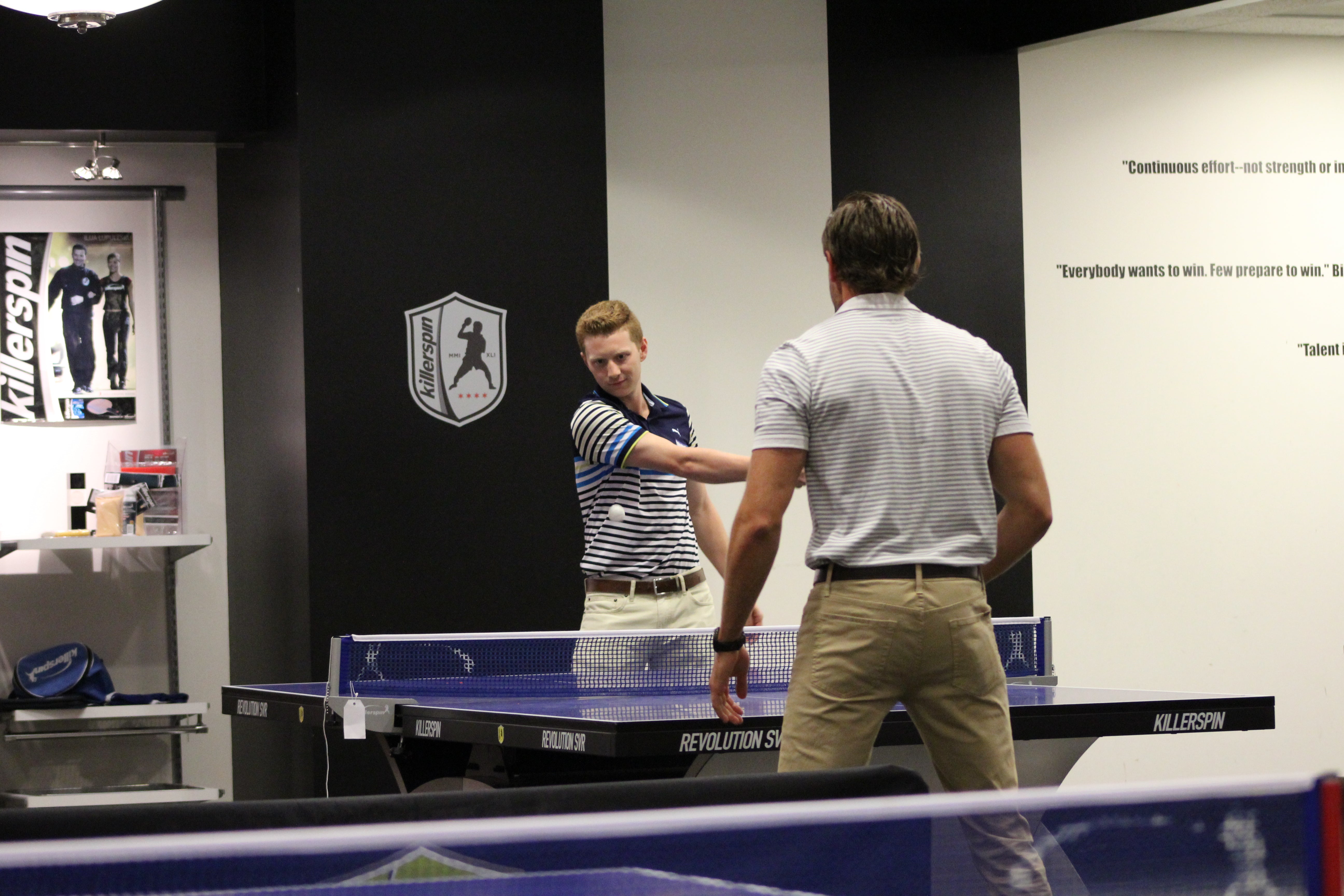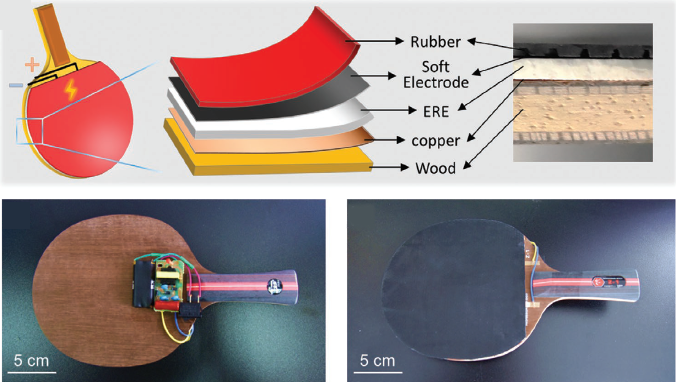Choosing the right ping pong paddle blade and rubber is crucial. It can significantly impact your game.
In this guide, we will help you understand how to make the best choice. Ping pong, also known as table tennis, is a sport that requires skill and the right equipment. The paddle you use plays a big role in your performance.
The blade and rubber are the main components of a paddle. They affect speed, spin, and control. With many options available, it can be confusing to pick the right ones. But don’t worry. This guide will break down the factors you need to consider. By the end, you will know how to choose the perfect blade and rubber for your playing style.
Introduction To Ping Pong Paddles
Choosing the right ping pong paddle can improve your game. The paddle affects your control, spin, and speed. Let’s break down the key aspects to consider.
Importance Of Choosing The Right Paddle
The right paddle enhances your playing style. A good paddle offers better control and precision. It helps you play your best game.
Playing with the wrong paddle can hinder your performance. It may cause you to miss shots or lose control. Therefore, selecting the right paddle is crucial.
Components Of A Ping Pong Paddle
A ping pong paddle consists of two main parts: the blade and the rubber. Each part plays a vital role in your game.
| Component | Description |
|---|---|
| Blade | The wooden part of the paddle. It affects speed and control. |
| Rubber | The covering on the blade. It impacts spin and grip. |
Let’s dive into each component:
- Blade: Made of wood or composite materials. It determines the paddle’s speed and control. Choose a blade that suits your play style.
- Rubber: Comes in different types for varying levels of spin and control. Select the rubber based on your preference for spin or speed.
Both components must work in harmony. Your choice impacts your overall performance.

Credit: www.killerspin.com
Understanding Paddle Blades
Choosing the right ping pong paddle blade is crucial. It affects your game significantly. Paddle blades come in various types and compositions. They also differ in thickness. Understanding these aspects helps in making an informed choice.
Types Of Blades
Paddle blades can be classified into two main types: All-wood and Composite blades.
- All-wood blades: Made from different types of wood. These provide better control.
- Composite blades: Include materials like carbon or fiberglass. These offer more speed and power.
To choose the right blade, consider your playing style. Control players often prefer all-wood blades. Offensive players might go for composite blades.
Blade Composition
The composition of a blade determines its characteristics. Here are the common materials used:
- Wood: Provides flexibility and control.
- Carbon: Increases speed and stability.
- Fiberglass: Adds durability and strength.
The combination of these materials in a blade affects its performance. A blade with more wood offers better touch. A blade with more carbon or fiberglass gives more speed.
Blade Thickness
Blade thickness impacts the speed and control of your paddle. Here is a simple guide:
| Blade Thickness | Characteristics |
|---|---|
| < 6 mm | Thin blades. Offer more control. |
| 6-7 mm | Medium thickness. Balance of control and speed. |
| > 7 mm | Thick blades. Provide more speed. |
Consider your playing style when choosing blade thickness. Beginners often start with medium thickness for balance.
Choosing The Right Blade
When selecting a ping pong paddle, the blade is crucial. It affects your gameplay significantly. Here’s how to choose the right blade.
Playing Style Considerations
Your playing style matters when picking a blade. Are you an offensive player? Do you focus on defense? Offensive players need a fast blade. Defensive players need more control.
- Offensive Style: Look for a stiff blade.
- Defensive Style: Opt for a flexible blade.
- All-round Style: Choose a balanced blade.
Speed Vs. Control
Blades can be fast or controlled. Fast blades give quick returns. But they can be harder to control. Controlled blades offer better precision. Consider what you need more.
| Blade Type | Speed | Control |
|---|---|---|
| Offensive | High | Low |
| Defensive | Low | High |
| All-round | Moderate | Moderate |
Weight And Balance
Blade weight affects your game. Heavier blades provide more power. Lighter blades offer more control. Balance is also key. Some blades are head-heavy. Others are evenly balanced.
- Heavy Blades: More power, less control.
- Light Blades: More control, less power.
- Balanced Blades: Good for all-round play.

Credit: www.youtube.com
Exploring Paddle Rubbers
Choosing the right paddle rubbers is a crucial step in improving your ping pong game. The rubber on your paddle greatly affects your performance. It impacts how you hit, spin, and control the ball. To make an informed decision, you need to understand the different types, characteristics, and thicknesses of paddle rubbers. Let’s explore these factors in detail.
Types Of Rubbers
There are several types of ping pong paddle rubbers. Each type offers unique advantages:
- Inverted Rubbers: These are the most common. They provide good control and spin.
- Pimpled Rubbers: These have short or long pimples (spikes). They are good for defensive play.
- Anti-spin Rubbers: These reduce the spin of the ball. They help control powerful shots.
Rubber Characteristics
Different rubbers have unique characteristics that affect your play style. Consider the following:
| Characteristic | Description |
|---|---|
| Speed | Fast rubbers help in aggressive play. Slow rubbers aid control. |
| Spin | High-spin rubbers help in executing spin shots. Low-spin rubbers are better for flat hits. |
| Control | High control rubbers are easier for beginners. They help in placing the ball accurately. |
Rubber Thickness
The thickness of the rubber affects your paddle’s performance. Here are some key points:
- Thicker Rubbers: These provide more speed and spin. They are ideal for offensive players.
- Thinner Rubbers: These offer better control. They are suitable for defensive or all-round players.
Standard thickness ranges from 1.5mm to 2.5mm. Choose according to your play style and experience level.
Selecting The Ideal Rubber
Choosing the right rubber for your ping pong paddle is crucial. It can significantly impact your performance. Let’s explore the factors that matter the most.
Spin And Speed Preferences
Spin and speed are two critical aspects. Different rubbers offer varying levels of spin and speed. If you prefer high-speed gameplay, opt for rubbers with a higher speed rating. For those who love to add spin, choose rubbers designed to enhance spin.
Here’s a quick comparison:
| Type | Spin | Speed |
|---|---|---|
| High-Speed Rubber | Medium | High |
| Spin-Focused Rubber | High | Medium |
Control And Feel
Control is essential for accurate shots. Rubbers with a softer feel usually provide better control. They allow the ball to stay longer on the paddle. This gives you more time to direct your shots.
Consider the following:
- Soft Rubbers: Great for control, less speed.
- Hard Rubbers: More speed, less control.
Durability And Maintenance
Durability is another key factor. Some rubbers wear out faster than others. Regular maintenance is also crucial. Clean your rubber after each use to extend its life.
Maintenance Tips:
- Use a damp cloth to clean the rubber.
- Avoid using harsh chemicals.
- Store your paddle in a protective case.
Choose rubbers known for their durability. This ensures you get the best value for your money.

Credit: www.advancedsciencenews.com
Blade And Rubber Compatibility
Choosing the right ping pong paddle involves more than just picking a blade and rubber. Blade and rubber compatibility is crucial for optimal performance. This means the blade and rubber should complement each other. This combination affects your control, speed, and spin. Let’s explore how to achieve the best match.
Matching Blade With Rubber
Matching the right blade with the right rubber can enhance your game. Blades come in various types: All-round, Offensive, Defensive. Each type serves different play styles.
Rubbers also have different characteristics. They can be tacky or non-tacky, hard or soft. The right combination depends on your playing style. For instance:
- All-round Blades: Pair with medium-hard rubbers.
- Offensive Blades: Use soft, tacky rubbers for spin.
- Defensive Blades: Choose hard, non-tacky rubbers for control.
Performance Impact
Your paddle’s performance heavily depends on the blade and rubber choice. A well-matched set can improve your control and power. It can also enhance your spin capabilities.
Using a mismatched pair can hinder your play. For example, a soft rubber on a slow blade reduces speed. Similarly, a hard rubber on a fast blade decreases control.
Consider these effects:
| Blade Type | Rubber Type | Impact |
|---|---|---|
| All-round | Medium-hard | Balanced play |
| Offensive | Soft, tacky | High spin, speed |
| Defensive | Hard, non-tacky | Better control |
Testing Combinations
Testing different blade and rubber combinations is essential. It helps find what works best for you. Start with a blade that suits your style. Next, try various rubbers on it.
Many players test combinations during practice sessions. This approach allows you to experience different setups. Note how each combination affects your game. Adjust until you find the perfect match.
Consider these steps:
- Choose a blade that fits your play style.
- Test different rubbers on this blade.
- Evaluate speed, spin, and control.
- Adjust until the combination feels right.
Remember, the goal is to find a setup that enhances your strengths. It should also mitigate your weaknesses. Happy testing!
Customizing Your Paddle
Choosing the right ping pong paddle can elevate your game. Customizing your paddle is crucial. It ensures you have the perfect balance, control, and speed. Let’s explore the key aspects of assembling your paddle, handle types, and personal adjustments.
Assembling The Paddle
Assembling a ping pong paddle involves selecting the blade and rubber. The blade is the core of your paddle. It provides the structure and determines the speed and control. The rubber affects the spin and control.
- Blades: Choose between all-wood or composite blades. All-wood blades offer better control. Composite blades provide more speed.
- Rubbers: Opt for inverted, short pips, or long pips. Inverted rubbers are common. They offer good spin and control.
Handle Types And Grips
The handle type affects your grip and comfort. There are different handle types to consider:
| Handle Type | Description |
|---|---|
| Flared Handle | Wider at the end. Great for better grip and control. |
| Anatomic Handle | Curved to fit your hand. Good for stability and comfort. |
| Straight Handle | Same width throughout. Allows for easy switching of grips. |
Personal Adjustments
Personal adjustments fine-tune your paddle for your playing style. Consider the following:
- Weight: Adjust the weight by choosing different blade materials. Lighter blades provide better control.
- Thickness: Thicker blades offer more power. Thinner blades give more control.
- Rubber Hardness: Softer rubbers give more control. Harder rubbers provide more speed.
Customizing your paddle ensures it fits your style and preferences. Experiment with different combinations to find what works best.
Expert Tips For Beginners
Choosing a ping pong paddle can be challenging for beginners. It’s crucial to select the right blade and rubber for better control and performance. Here are some expert tips to help you make an informed decision.
Budget Considerations
Start by setting a budget for your ping pong paddle. Beginners should look for affordable options that still offer good quality. Expensive paddles can be overwhelming and unnecessary at the start. Aim for a balance between cost and performance.
Learning Curve
Understand that the learning curve with a new paddle can be steep. A blade with moderate speed and control is best for beginners. Avoid highly specialized paddles until you’ve developed your skills. This ensures a smoother and more enjoyable learning experience.
Practice And Experimentation
Practice regularly with your chosen paddle to get used to its feel. Experiment with different rubbers to find what suits your playing style. Trying various combinations helps you understand what works best for you. Remember, consistent practice leads to improvement.
Frequently Asked Questions
What Factors To Consider When Choosing A Ping Pong Blade?
When choosing a ping pong blade, consider the blade’s material, weight, and handle type. Different materials affect speed and control. The weight impacts maneuverability. Handle types vary for comfort.
How Does Rubber Affect Paddle Performance?
The rubber on a ping pong paddle affects spin, speed, and control. Choose rubber based on your playing style. Soft rubber offers more control, while hard rubber provides more speed.
Should Beginners Use A Specific Type Of Paddle?
Beginners should use a paddle with more control and less speed. This helps develop proper techniques. A balanced, all-round paddle is ideal for beginners.
How Often Should I Replace My Paddle Rubber?
Replace your paddle rubber every 6-12 months, depending on usage. Worn rubber loses grip and affects performance. Regular replacement ensures optimal play.
Conclusion
Choosing the right ping pong paddle matters for your game. Focus on blade type and rubber. Consider your playing style. Think about control, speed, and spin. Test different options. Find what feels best in your hand. Pay attention to quality.
Invest in a paddle that suits you. Practice regularly for improvement. Enjoy the game more with the right equipment. Happy playing!

Hi, My name is Benjamin Fink and I am the author of the ping pong reviewed blog. I am a sports person learning and sharing my knowledge with others about ping pong and other sports.
I have been playing ping pong for the last 17 years and teaching people about the game and writing new things about the game through this blog When finding something new. I have participated in serious ping pong tournaments in my country.
